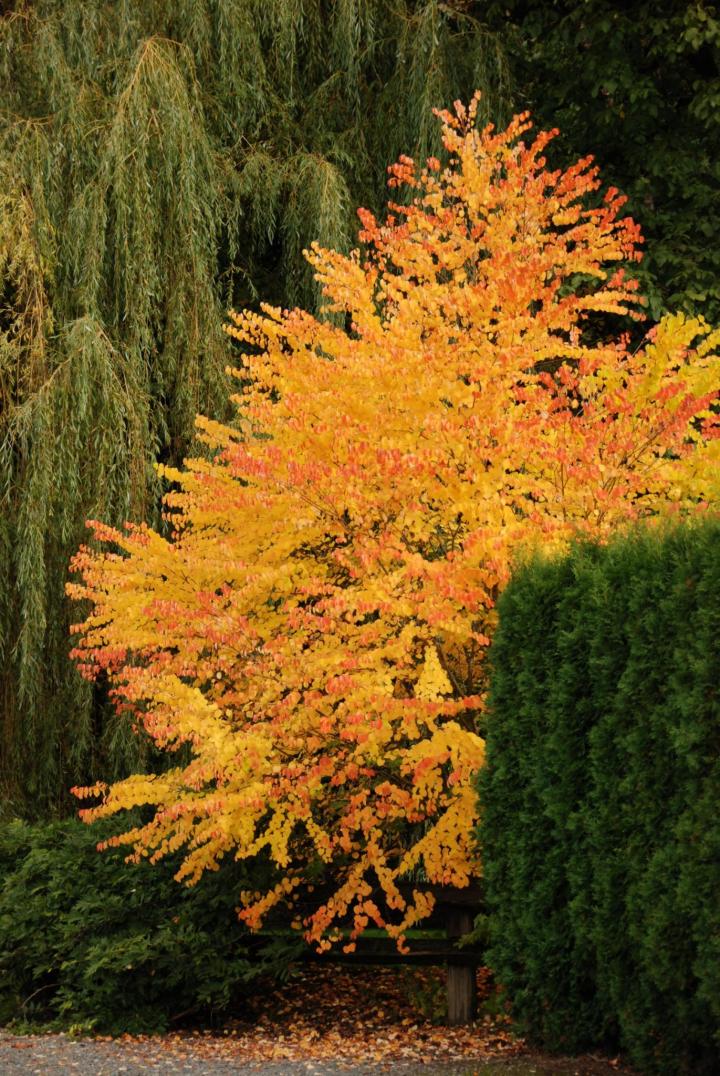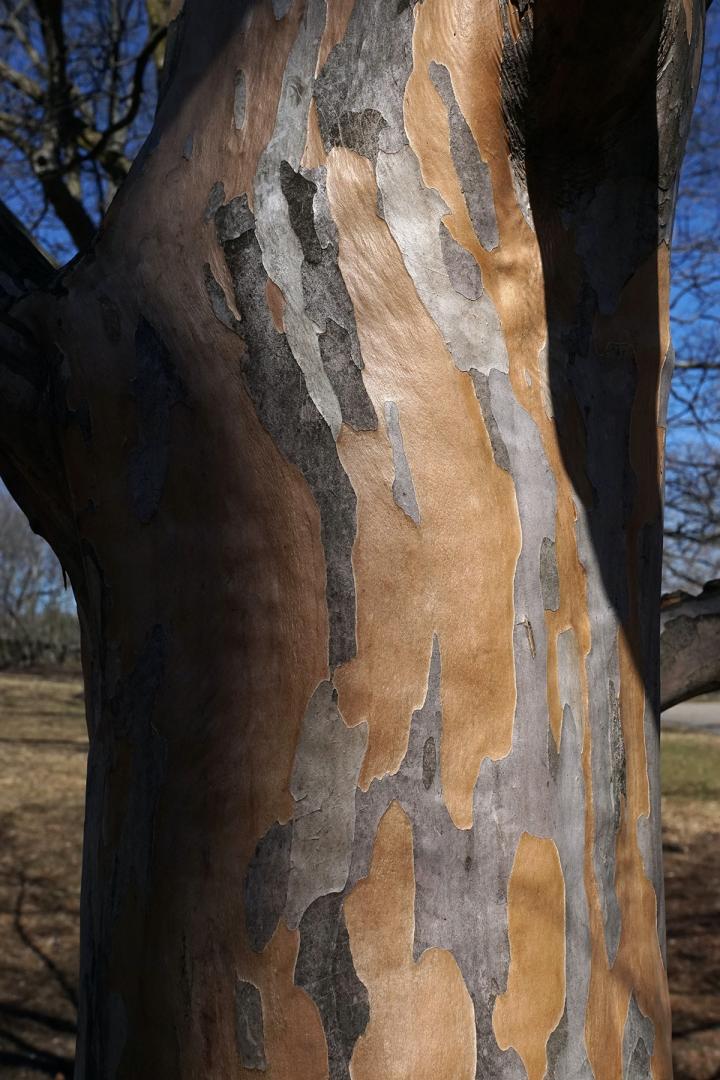If you’re looking for an attractive ornamental tree for your yard, chances are that you are probably considering one of the old standbys like crabapple, flowering cherry, hawthorn, or Japanese maple. While any one of these trees will certainly add beauty and interest for part of the season, there are a few less common ones that have four-season value and are sure to have your friends saying, “Wow, what kind of tree is that?”
1. Katsura
The deciduous katsura tree, Cercidiphyllum japonicum, which is native to China and Japan, is one tree that will make guests say, “Wow.” Pyramidal when young, the 40- to 60-foot tree assumes a graceful rounded shape with maturity and ideally serves as a shade tree. The spring foliage emerges a beautiful rosy purple color, changing to a cool blue-green as the season progresses.

With the arrival of autumn, its 2- to 4-inch heart-shape leaves develop wonderful shades of yellow, orange, and apricot. As the colored leaves drop to the ground, they scent the air with a sweet, spicy fragrance that hints of cinnamon, vanilla, or burnt sugar and gives the tree its nickname, “caramel tree.”
Its lightly peeling, shaggy brown bark carries katsura’s charm right through the winter. The tree thrives in Zones 4 to 8 and has no serious insect or disease problems, but bear in mind that hot, dry conditions may scorch the fabulous foliage.
2. Persian Parrotia
The Persian parrotia, Parrotia persica, aka Persian ironwood, is a spectacular performer that is sure to turn heads at any time of the year. It grows to a modest 20 to 40 feet in height eventually (perhaps taking 7 to 8 years to achieve 10 feet), with a 15- to 30-foot canopy.
In March or early April, a haze of small crimson flowers emerge to develop reddish purple leaves that mature to a deep green. It is parrotia’s brilliant autumn foliage, however, that really steals the show, with a breathtaking display of bright yellow, orange, and scarlet leaves. Exfoliating bark revealing shades of creamy white, green, gray, and brown tones give this tree exceptional winter interest.
Hardy in Zones 4 to 8 and with no significant insect or disease problems, it is well suited to small lawns with full sun.
3. Japanese Stewartia
Another attractively small tree that is sure to brighten up any landscape or border in a big way is Japanese stewartia, Stewartia pseudocamellia, which matures to 12 to 40 feet.

Its 2- to 3-inch white flowers with prominent orange anthers resemble camellia blossoms (it is related to Camellia) and open in late June or early July, when most other flowering trees are done blooming.
The new twig growth is red, and young leaves start out with a purple tint, turning to dark green as they develop. Stewartia’s stunning fall foliage is orange, red, or a mix of the two. Its showy bark unfolds in layers, displaying a mosaic of grays, reds, and orange that won’t go unnoticed in any season.
Happy in full sun or part shade, this tree is hardy in Zones 5 to 8 and is generally unaffected by disease or insects.
It is probably just a coincidence that all three of these trees end in the letter “a,” but if this were a grade, we think that their outstanding performance in the landscape would really merit raising it to “A+.”
Source / The Old Farmer’s Almanac

